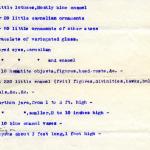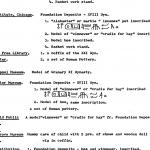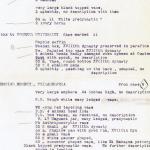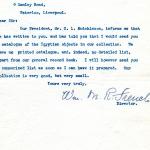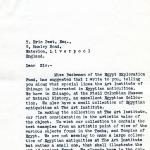Chicago, IL, Art Institute
The Art Institute developed from the Chicago Academy of Fine Arts, a museum and art school that was founded in 1879. It was renamed the Art Institute of Chicago in 1881. Among the largest of the encyclopedic museums in the US, the Art Institute’s holdings focus on fine and decorative art of the west, but it also has significant collections that represent world cultures as well as classical and Egyptian collections.
The first Egyptian antiquity to enter the collection was a shabti, a gift from Amelia B. Edwards, in 1890, which had been original retrieved from the tomb of Horudja in the Fayum at Hawara. The force in building the collection was Charles Hutchinson, the first President of the Art Institute. He was also on the Executive Committee of the Archaeological Institute of America. The Art Institute was a partner in the Chicago Society of Egyptian Research, founded in 1897 (also known as “the Fund for Chicago”) that raised subscriptions to support the EEF. Hutchinson and Martin Ryerson (a trustee of the Art Institute and the Field Museum, among other local institutions), traveled to Egypt buying large numbers of antiquities in 1982, 1984, and 1910. Additional purchases were made for the museum in 1920 by James Henry Breasted of the University of Chicago. Breasted served as consulting curator for the collection, and in 1923, a catalog of the collection was published by T.G. Allen of the University of Chicago. During the 20th century, much of the collection was transferred to the Oriental Institute.




